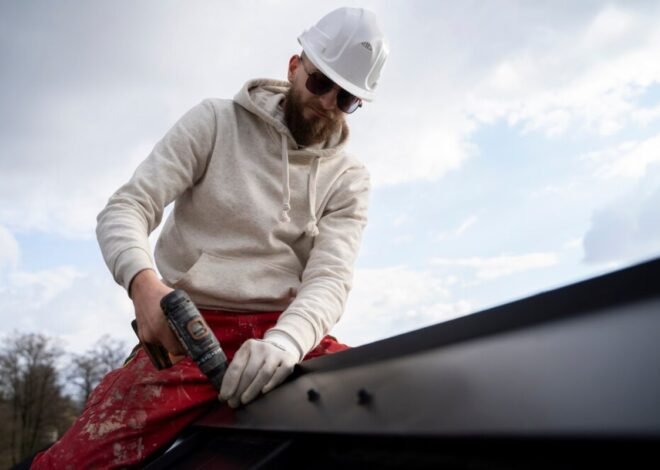
It’s Impossible To Create a Hazard-free Work Environment… or is it?
Regardless of sector or industry, work environments today are much safer than they were just a couple of decades ago. We’ve got tech advances, a greater awareness of existing risks from both employers and employees, and stricter health and safety regulations to thank for that. Unfortunately, despite all these improvements, workplace accidents, injuries, and fatalities are still commonplace.
According to the latest figures provided by the International Labour Organization (ILO), over 2.3 million people die annually due to work-related accidents or illnesses. The number of occupational accidents amounts to 340 million per year at the global level, while 160 million employees suffer from work-related diseases.
This proves that work risks and hazards continue to pose a major problem all over the world.
It’s a common belief that creating a completely hazard-free workplace is an unrealistic goal and no matter how hard we try, it’s practically impossible to eliminate all risks.
And yet, the zero-harm culture continues to gain ground, challenging the traditional approaches to health and safety and giving hope that one-day work injuries, fatal or not, along with all the negative consequences they give rise to, might become a thing of the past.
Achieving The Impossible
Some believe that eradicating all risk factors and avoiding workplace accidents altogether is only going to be possible when humans are going to be replaced by machines.
Basically, a perfectly safe work environment is one where people are no longer part of the picture, which is a rather absurd idea to start with.
Therefore, becoming complacent and sitting with our arms crossed while waiting for this utopian scenario to come true is not the best course of action.
Just because we haven’t been able to eradicate safety hazards in work settings so far doesn’t mean we should stop trying.
There’s always room for improvement and there are plenty of things we could still do to at least get as close as possible to a risk-free environment.
After all, practice makes perfect, so commitment, determination, and perseverance are key ingredients in chasing this elusive goal.
Even if the idea of a hazardless workplace seems idealistic and improbable, it’s important to aspire towards it to tackle safety challenges effectively and find new solutions for longstanding problems.
Admittedly, this is not an easy endeavor as it requires a lot of resources and effort, but even the slightest improvement in this regard is going to be worth it.
Towards a Safer Future
There are various measures that companies and managers can adopt to further their health and safety efforts and ensure risk-free environments for workers, contractors, and visitors.
Assessing Workplace Risks and Hazards
Some industries are inherently more dangerous than others due to the nature of the operations they involve. For example, construction has the highest rate of fatal workplace accidents while in education and health services, nonfatal injuries are more commonplace.
This means that the severity and types of hazards vary from one work setting to another and each company has unique challenges to overcome.
Therefore, the first step one can take toward creating a safer work environment is to assess every business area and identify potential risks and hazards.
Recognizing vulnerabilities and anticipating what could go wrong is the best way to reduce the likelihood of work-related accidents and illnesses and keep everyone safe.
Creating a Plan
Based on the findings and insights provided by this research, companies should devise a health and safety plan that all employees have to be made aware of and follow at all times.
This should include comprehensive guidelines, standards, and procedures aimed at minimizing or eliminating safety risks and hazards and limiting the incidence of accidents and health issues at work.
It’s equally important to run regular safety audits to ensure compliance with current health and safety regulations and identify areas where improvements are required.
As a company grows and expands its operations, offerings, and workforce, health and safety policies have to evolve with it.
Focusing on Employee Training
It is often said that a workplace is only as safe as its workers. So, although the responsibility for ensuring a hazard-free work environment and protecting staff and other persons against harm largely rests with the employer, employees also play an important role in it.
The two parties have to work together to build a zero-harm culture and make workplaces as safe as possible.
Proper training is essential in this respect, not just for new employees but for all staff members.
Apart from being up to date with all the safety guidelines and procedures outlined in the company’s health and safety policy, workers should undergo regular safety training and have a variety of tools and resources available that can help them conduct their tasks safely and minimize the likelihood of human errors.
Reporting and Recording incidents
When a work accident occurs, companies should have clear regulations in place for reporting and recording these types of incidents.
A detailed investigation should be carried out to help safety managers understand the circumstances and causes of the accident.
The information kept in these records can serve to identify trends and vulnerabilities and adjust safety procedures and practices to prevent similar accidents from happening in the future.
Final Thoughts
Safety is a crucial component for all businesses, regardless of size or industry. For now, creating a zero-risk work environment remains a distant goal that we might never be able to reach.
But we can never know if this is possible unless we try to achieve it.
So, while it’s important to maintain a realistic mindset and acknowledge limitations, it’s equally imperative to strive for perfection and focus on continuous improvement and innovation in workplace safety.
You May Like Also:












